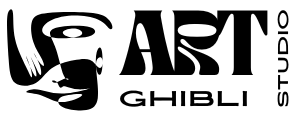Introduction
EO Pis In the world of industrial chemistry and sterilization technologies, EO Pis—an abbreviation for Ethylene Oxide Process Integration Systems—has emerged as a game-changer. Ethylene Oxide (EO) is widely used for sterilizing medical equipment, pharmaceuticals, and even some food products. However, due to its volatile nature and environmental impact, the need for safer, more efficient, and highly integrated systems has led to the development of EO Pis.
This article explores what EO Pis are, how they function, their key applications, benefits, regulatory considerations, and how they are shaping the future of sterilization and chemical processing industries.
What is EO Pis?
EO Pis, or Ethylene Oxide Process Integration Systems, refer to advanced setups that integrate multiple components of EO sterilization and processing into a unified, controlled, and optimized system. These systems aim to streamline the sterilization process while minimizing EO emissions, improving safety, and ensuring compliance with global regulations.
EO Pis typically include:
-
EO gas storage and handling units
-
Pre-conditioning and aeration chambers
-
Monitoring and control systems
-
Emission control mechanisms (e.g., catalytic oxidizers, scrubbers)
-
Data logging for regulatory compliance
These systems are vital for industries where sterilization is non-negotiable, especially healthcare, pharmaceuticals, and biotechnology.
Applications of EO Pis
EO Pis systems are widely implemented across industries where EO sterilization is indispensable. Below are some of the primary sectors:
1. Medical Device Sterilization
Medical tools, catheters, syringes, surgical instruments, and implants must be sterilized to prevent infection and contamination. EO is one of the few agents that can penetrate complex devices without damaging sensitive materials.
2. Pharmaceutical Industry
EO sterilization is used for packaging and drug-delivery systems that cannot withstand high temperatures. EO Pis ensures accurate dosing, exposure time, and humidity, all critical to sterilization efficacy.
3. Food Packaging
Though less common, EO sterilization is used for spices, herbs, and food containers, especially when microbial contamination risks are high. EO Pis provide assurance that EO residues are within safe limits.
4. Biotech and Laboratory Equipment
From petri dishes to pipettes, many lab tools require sterile conditions. EO Pis help labs automate and streamline the sterilization process while adhering to strict biosafety standards.
How EO Pis Work: The Process Breakdown
EO Pis involve several key stages:
-
Pre-Conditioning
Items to be sterilized are placed in a chamber where temperature and humidity are adjusted to optimum levels. -
Sterilization with EO Gas
EO gas is injected into the sterilization chamber under vacuum. The gas penetrates all items uniformly due to the system’s controlled parameters. -
Post-Sterilization Aeration
EO Pis include aeration chambers where sterilized items are ventilated to remove residual EO gas, ensuring safety for human handling. -
Emission Control
Modern EO Pis incorporate catalytic converters or scrubbers to minimize EO release into the environment, thus reducing health and environmental hazards.
Key Benefits of EO Pis
EO Pis offer several advantages that make them a preferred choice in sterilization:
1. Enhanced Safety
EO is highly flammable and toxic. EO Pis use automated controls and sealed systems to minimize operator exposure and fire risks.
2. Compliance and Monitoring
With built-in data logging and compliance reporting tools, EO Pis ensure adherence to EPA, FDA, OSHA, and international standards.
3. Operational Efficiency
Integrated systems reduce human error, save time, and minimize gas wastage by optimizing each stage of the sterilization cycle.
4. Eco-Friendly Technology
EO Pis with emission control systems significantly reduce environmental impact, helping companies meet sustainability goals.
5. Customization and Scalability
EO Pis can be designed to fit small laboratories or massive industrial plants, allowing flexibility across different operational scales.
Regulatory Landscape
Given the toxic and carcinogenic nature of EO, regulatory bodies have imposed strict controls on its usage. EO Pis must meet various international and national guidelines, including:
-
U.S. Environmental Protection Agency (EPA) standards for EO emissions
-
Occupational Safety and Health Administration (OSHA) limits on EO exposure
-
Food and Drug Administration (FDA) regulations for medical device sterilization
-
ISO 11135 standards governing EO sterilization processes
Manufacturers must demonstrate that their EO Pis meet these compliance benchmarks through documentation, emissions tracking, and safety audits.
Challenges in EO Pis Implementation
Despite the advantages, there are some challenges in adopting EO Pis:
-
High Initial Cost: Advanced EO Pis systems can be capital-intensive.
-
Training Requirements: Staff must be trained in operating complex systems safely.
-
Strict Regulatory Scrutiny: Continuous monitoring and periodic upgrades may be necessary to remain compliant.
-
EO Gas Supply: The global supply chain for EO can be unstable due to geopolitical and industrial constraints.
However, these challenges are often outweighed by the long-term operational, safety, and regulatory benefits.
The Future of EO Pis: Automation, AI, and Green Chemistry
The EO Pis landscape is evolving rapidly with the integration of AI and IoT technologies. Smart systems can now:
-
Predict maintenance needs
-
Adjust cycles based on load parameters
-
Monitor EO levels in real-time
-
Send alerts or shut down automatically during anomalies
Moreover, research is underway to find greener alternatives to EO or to develop low-emission EO cycles. The future may see EO Pis systems that use bio-derived EO, consume less energy, and are completely self-regulated using machine learning algorithms.
Conclusion
EO Pis—Ethylene Oxide Process Integration Systems—represent a significant advancement in the world of sterilization and chemical processing. These systems offer enhanced safety, efficiency, compliance, and eco-friendliness, making them indispensable for industries where sterility is paramount.
As technology evolves, EO Pis are likely to become even more intelligent, compact, and sustainable. Businesses looking to maintain high standards of hygiene, comply with regulations, and reduce environmental impact should consider integrating EO Pis into their operational ecosystem.

